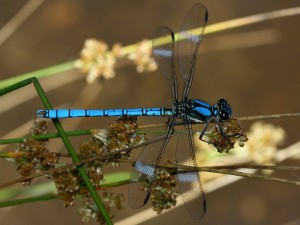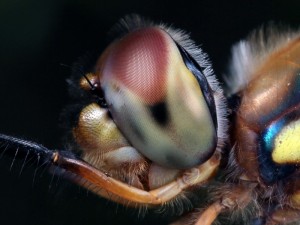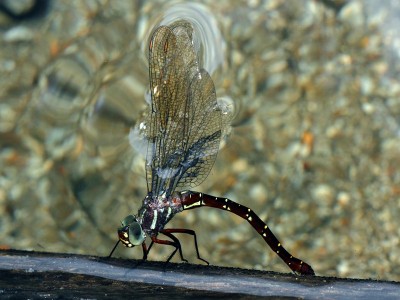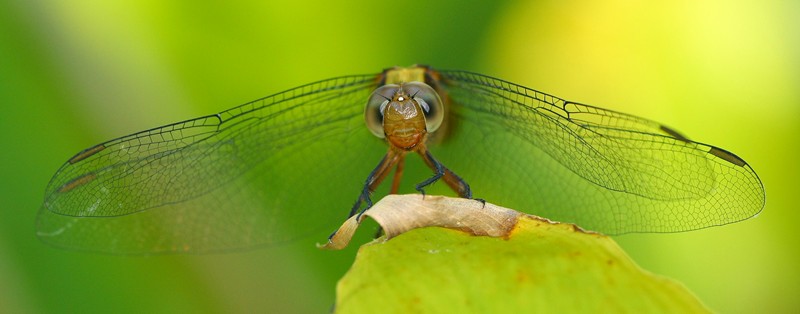Order Odonata

Diphlebia lestoides, one of the flat-
winged damselflies.
Dragonflies (suborder Anisoptera) and Damselflies (suborder Zygoptera) are easily recognised and commonly seen around bodies of fresh water or in open areas such as parks and gardens. These insects belong to an ancient order. Dragonflies have been around for perhaps 220 million years and the basic design has changed little since during that time, although they have shrunk a little – the oldest known fossilised specimens had wingspans of 60cm!

Tau Emerald dragonfly, Hemicordulia tau.
Dragonflies are usually bigger than Damselflies, but they are quite similar in their basic appearance. They both have long, slender bodies and two pairs of heavily veined, membranous wings. At rest, almost all dragonflies hold their wings out at right angles to their bodies, while most damselflies close their wings along the top of their bodies. They have large compound eyes that afford excellent vision and triangular, mobile heads with mandibulate (chewing) mouthparts. One distinguishing feature between them is that dragonfly eyes meet in the middle of the head, whereas damselfly eyes are completely separate on either side of the head.
Dragonflies and Damselflies are insectivores, which includes other Dragons and Damsels, and are very adept at catching their prey on the wing. Their nymphs, which live in fresh water, are also predatory, feeding on other aquatic invertebrates.

laying eggs on a submerged log.
The mating season is a busy time for these insects, especially the males, who spend most of their time defending their small territory at the edge of a water body and trying to get the attention of a female. After mating, the female lays her eggs in the water, sometimes completely submerging herself to do so. The eggs hatch after 6-30 days and the nymphs remain under water where they moult up to 15 times while developing. This can take from a couple of months to a couple of years. Finally, they crawl out of the water and shed their last nymphal skin and emerge as fully-fledged adults.
Odonata are widely distributed across Australia, their only requirement being a source of running or standing fresh water. Adults, however, will travel some distance from water in search of food, so they can sometimes be seen in what would appear to be an arid area.
Dragonflies and damselflies can be difficult to photograph due to their skittish nature, and great patience is required at times. I have sat and waited for up to an hour just to get one picture. It is always worth the wait.
~~~~~
Click here to see the Dragonfly and Damselfly photo galleries
~~~~~
